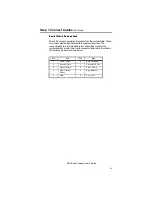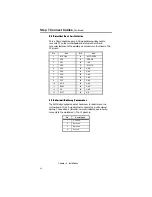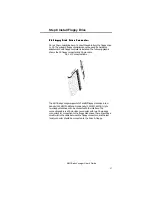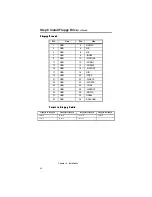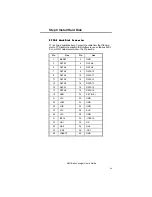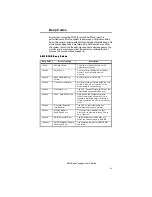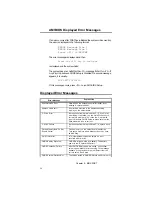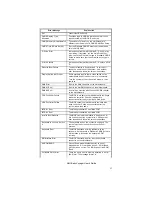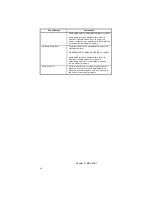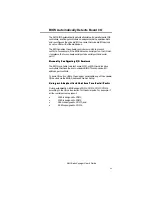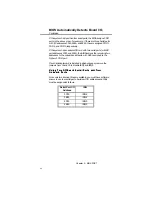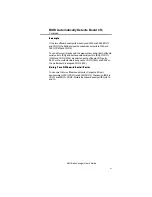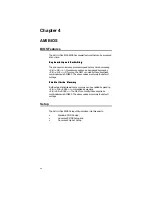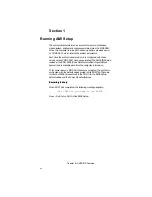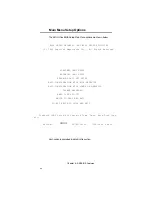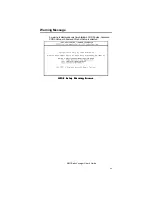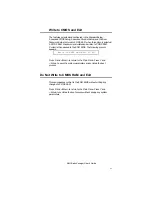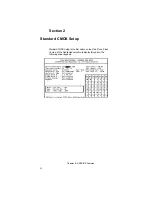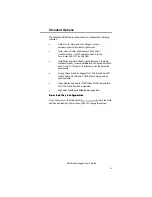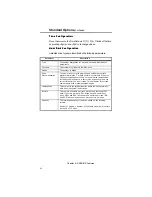
AMI Baby Voyager User's Guide
39
BIOS Automatically Detects Board I/O
The AMI BIOS automatically detects all serial ports, parallel ports, IDE
controllers, and floppy controllers on adapter cards in expansion slots
and reconfigures the onboard I/O to ensure that onboard I/O devices
do not conflict with offboard devices.
The BIOS enables the onboard controllers or ports to prevent
conflicts. For example, if the BIOS detects a serial port on the I/O slot,
it programs the two onboard serial ports as serial port2 and serial
port3.
M a n u a l l y C o n f i g u r i n g I / O D e v i c e s
M a n u a l l y C o n f i g u r i n g I / O D e v i c e s
The BIOS is not able to detect some MFM or ESDI hard disk drive
controllers that have their own onboard BIOS. This can cause I/O
address port conflicts.
To avoid I/O port conflicts, the end user can disable any of the onboard
I/O devices via the BIOS Advanced Chip Set Setup.
U s i n g a n A d a p t e r C a r d t h a t h a s T w o S e r i a l P o r t s
U s i n g a n A d a p t e r C a r d t h a t h a s T w o S e r i a l P o r t s
During autodetection, BIOS assigns COM1, COM2, COM3, COM4
according to the I/O port selection for the serial ports. For example, if
all four serial ports are present:
•
3F8h is assigned to COM1,
•
2F8h is assigned to COM2,
•
3E8h is assigned to COM3, and
•
2E8h is assigned to COM4.
Summary of Contents for 39 Series
Page 6: ...Preface vi ...
Page 12: ...Chapter 1 Introduction 6 ...
Page 14: ...Chapter 2 Installation 8 Baby Voyager Layout ...
Page 26: ...Chapter 2 Installation 20 ...

